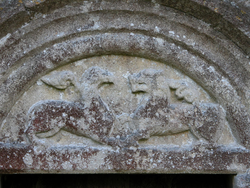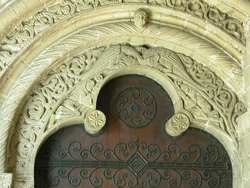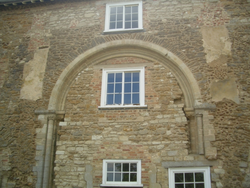
The Corpus of ROMANESQUE SCULPTURE in Britain & Ireland

Glossary

The top part of a capital, not to be confused with an impost. Both of these terms have their roots in classical architecture. In a classical context the abacus is the upper part of a capital that the entablature rests on, while the impost is a heavy stone supporting an arch. Transferring the terms to medieval buildings has caused endless confusion and heated disagreements. The distinction applied here is explained more fully under impost.

A Mediterranean plant, with thick, fleshy, scalloped leaves. The Romanesque stylisation of the acanthus leaf, also called Winchester acanthus, is ultimately derived from that used in classical decoration, especially Corinthian and composite capitals, but bears little resemblance to the plant.

Applied to pairs of figures, animals, etc., placed symmetrically, back to back. They are still addorsed if their bodies are back-to-back and their heads are turned to face one another.

Applied to pairs of figures, animals etc., placed symmetrically, facing one another. They are still affronted if their bodies face one another with their heads turned back. Also called confronted.

Originally a stone table or block containing relics, consecrated for the celebration of the Eucharist. Nowadays most altars are simply wooden tables.

An arrangement of piers in an arcade in which two forms are used alternately, such as round and octagonal.

A roll moulding on an order, masking the edge between the face and the soffit (the arris).

A spiral form used at the corners of Ionic and Corinthian capitals, and their medieval derivatives.

A hanging for the front of the altar, originally of cloth but used to describe any kind of decoration in this position. Also called a frontal. See also reredos.

Highest point of arch, gable etc.

A series of arches supported by piers or columns: when applied to the surface of a wall it is called a blind arcade; when used ornamentally, it is called arcading.

A horizontal stone supported by columns or piers. It is principally found in classical architecture, or in derivations from classical models, where it functions as an alternative to an arch.
The sharp edge where two surfaces meet at an angle.

Squared blocks of masonry cut to an even face.

A classical type common in the medieval period, with a concave moulding (scotia) between two convex ones (torus mouldings).

A cupboard or recess for sacred vessels, generally found in the north or south wall of the chancel.





















